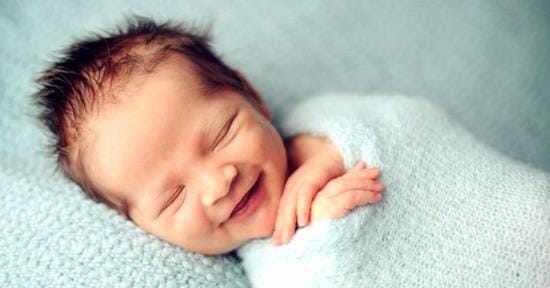What is In Vitro Fertilisation (IVF) ?
In Vitro Fertilization (Test-tube baby or ivf) treatment is to fertilize male and female reproductive cells in a laboratory environment to have a baby. In order to have an IVF treatment healthy reproductive cells (eggs and sperm) from both the female and male partner are required. Eggs of the female are grown and developed to be ready in about ten days (ovulation induction, controlled over stimulation) . Then, through a basic surgical procedure called oocyte (egg) retrieval, female reproductive cells are transferred to a laboratory environment (the OPU method) . For males, usually sperm collected via masturbation is used. If sperm concentration is too low or if there is no sperm in the semen (azoospermia) sperm can be extracted from the testes via a surgical operation by help of a microscope. Eggs of the female and sperm from the male are then fertilized in a laboratory environment to produce the embryo (fetus) (insemination). Embryos developed in this way are, then, transferred to the uterus with a special catheter so that pregnancy is started (embryo transfer).
To summarize, there are five steps in a typical IVF (in vitro fertilization – Test-tube baby) procedure:
- Ovary suppression by means of medication
- Ovary stimulation (ovulation induction, controlled ovarian hyperstimulation)
- Collecting the eggs – Ovum pick up (OPU method)
- Insemination: Eggs collected (OPU), and a specific number of sperm are introduced in specially prepared culture fluid and kept in devices (incubators) imitating the mother’s body (as the medium). This procedure is called insemination.
- Embryo transfer: Depending on their rate/speed of division, after about 2-5 days of collection divided embryos are injected into the womb using a catheter, which is the procedure of Embryo Transfer (ET).
DEVELOPING EGGS (Ovulation induction)
STIMULATING OVARIES VIA MEDICATION AND IVF (TEST-TUBE BABY) STEPS (Controlled ovarian hyperstimulation)
What is ovulation induction (controlled ovarian hyperstimulation)
In order to improve the chances of pregnancy in IVF and infertility treatments, the number of ovum (egg), which is one per month in a healthy woman, should be increased. Thus, medication is used to have the ovaries produce more eggs.
The process of stimulating ovaries and increasing egg production in control is called “ovulation induction” or “controlled ovarian hyperstimulation”.
Determining IVF protocols.
Age, history of treatment, results of previous IVF procedures and the FSH levels on the 2nd or 3rd day of menstruation are factors determining IVF protocols. Medication used for stimulating ovaries is almost all injected.
1-2 months prior to the treatment birth control pills are taken (Yasmin, Microgynon, Desolett, Ginera etc.) These will improve the response of the ovaries to the medication that will be given to stimulate the ovaries.
Short and Long Protocols in IVF
Following the use of birth control pills nasal spray (Suprefact) or injection such as Decapeptyl, Lucrin, Zoladex are started about a week before the start of menstruation (on average) (Long Protocol), sometimes they are started on the first day of menstruation (Short Protocol). Your specialist will decide on the date that you should these medications.
Stimulating the Ovaries and Folliculometry
While using GnRH analogues , on the start of menstruation ovary stimulating medication will start and these will be used for about 7-10 days. In the meantime, follicles (eggs) developing in the ovaries are monitored frequently through ultrasound (folliculometry) and hormone assessment (E2 and P). The specialist/doctor decides on the best time to collect eggs (OPU) upon evaluating all results.
Assisted Hatching (Hatching needle) and OPU
When the eggs in the follicles reach a certain growth (observed via folliculometry), HCG (human chorionic gonadotropin) is injected (Pregnyl, Ovitrelle ) at a certain time to help the eggs mature and about 34-36 hours later eggs are collected (OPU).
Embryo Transfer (ET procedure)
Embryos produced right after egg collection and incubation with the sperm are placed inside the womb on 2nd, 3rd or sometimes the 5th day after retrieval. This is called “Embryo Transfer (ET)”.
Cancelling IVF Treatment
About 10% in IVF cases have to be cancelled before egg collection due to reasons such as insufficient egg development, premature ovulation and unwanted hormone changes (cancelling the cycle).
Oocyte Pick-up (OPU)
When eggs in IVF reach a certain growth, they are hatched by an injection (hatching injection) in the thigh and then in 36 hours they are collected. Collecting mature eggs is called “Oocyte Pick up (OPU), egg collection).
Egg collection (OPU) is almost completely done via transvaginal ultrasound aid. Other approaches include laparoscopy or transabdominal ultrasound aids which are hardly used.
In the transvaginal method, ovaries are monitored via an ultrasound probe located in the vagina. Passing through the vaginal wall a needle/injection is moved towards the ovary where the fluid inside the follicles is aspirated via this needle. Eggs are also aspirated with this fluid and then they are found and collected under a microscope. This process takes between 15-30 minutes. To comfort the patient and to avoid any pain during collection various medications are used.
What is Early Hatching (Premature Ovulation)?
GnRH analogues are used to prevent follicles from premature hatching (rupture). However, although rare, they may not be able to stop it from happening, and, follicles rupture before egg collection and the eggs are scattered around the womb. This is called early hatching (premature ovulation). Unfortunately, in a case of premature ovulation, the IVF procedure is cancelled.
Oocyte Incubation and Fertilization
Eggs (oocyte) collected via OPU are evaluated by an embryologist under a microscope and each one is assessed according to their maturity. The maturity of an egg determines its capacity for fertilization.
Fertilizing mature and healthy eggs and sperm is called “egg incubation”.
Having healthy embryos, in IVF treatment, depends on bringing together healthy sperm and healthy eggs. The success of the treatment depends on this.
EMBRYO TRANSFER (ET)
In IVF treatment, the most important and last step is to place the grown/developed embryos inside the womb, which is called embryo transfer.
Embryo transfer (ET) is the procedure of transferring the fetus (embryo) which has been fertilized in a laboratory environment inside the womb by means of a catheter on the gynaecological examination chair (table).
Embryo transfer (ET) is usually done on the second or, most of the time, the third day, after egg collection.
Healthy (normal) embryo or embryos are selected for transfer. Generally, 2-4 embryos are advised to be transferred. The more the number of embryos transferred, the higher the chances of unwanted multiple pregnancies because more than one embryo may attach to the womb.
Transfer is quite an easy and a painless procedure.
In embryo transfer, a special catheter carrying the embryo is passed through the vaginal opening and the embryos are placed inside the uterus; the transfer is done on the examination chair at a pelvic examination position. Embryos in the catheter are put inside the womb by help of a syringe.
In order to monitor the uterus on the ultrasound and transfer the embryos easily the bladder should be full.
Embryo transfer takes about 10-20 minutes on average. Thus, we suggest you come full bladder (feeling the need to go to the toilet) to have the transfer.
In IVF treatments, the last and most important process is embryo transfer.
12-13 days after embryo transfer, a pregnancy test is done by measuring Beta HCG in the blood. Because menstruation may be delayed due to medication, pregnancy can only be diagnosed via Beta HCG blood test.
What is Embryo Freezing (Embryo Cryopreservation)?
If there are excess healthy and developed embryos after transfer, they can be preserved by freezing. Storing embryos by freezing is called “Embryo Freezing.”
The First Interview, Examination and Preparation
The First Interview and Examination:
On the first appointment, the medical history is recorded with utmost care, previous tests are evaluated and the patient is examined. If the semen analysis is normal and there is no sexual dysfunction, there will be no need to examine the male partner. Examination of the woman, on the other hand, is vital to be able to determine future chances of pregnancy via IVF. In this procedure, the capacity of the ovaries, whether there are any cysts in the ovaries or not, the structure of the uterus, the presence of uterine fibroids or anomalies by birth and the presence of fibroids or polyps on the inner membrane of the uterus are evaluated. If not done recently, PAP smear test and if there is discharge, culture test should be done as part of the examination. Following gathering data regarding their medical history and the results of the tests and examination, the steps of the procedure is explained to the couple in detail and realistic information is given regarding their chances of pregnancy. Additionally, the couple should also be informed about the results of other procedures, the number of embryos to be transferred and the implantation rates of the unit (the chances for each embryo to attach inside the uterus). Moreover, potential side-effects of the application and long-term risks (regarding both the mother and the baby) should be explained to the couple. Also, complications regarding multiple pregnancies, which the demand for is common in our country, should be made clear to the couple.
ADVICE ON HOW TO PREPARE FOR IVF…
- If you are a smoker, you should quit smoking.
- Start taking multivitamin containing folic acid
- Throughout IVF treatment, try to stay calm, lead a quit life, get a good night sleep and avoid stress as much as possible.
- There is no conclusive data as to show that a specific diet is more useful. Studies on animals show that a protein rich diet has benefits.
- Depending on the treatment protocol, on the 20th
- 21st days of menstrual cycle, some medication (such as Lucrin, Suprecur, Synarel, Suprefact, Decapeptyl) may be necessary to suppress the ovaries.
- In some cases, before treatment, the use of birth control pills or estrogen pills (like Estrofem) may be necessary.
- Laboratory tests required for IVF should be completed prior to the treatment ( such as Hormone, Hepatitis B and C, HIV, Rubella IGG, blood count and blood type).
How many days does the treatment take?
Egg donation (Egg transfer)
In egg donation treatment, patients will spend 5 nights and 6 days in TRNC. After having decided on the treatment, until the ovulation (menstruation) day, which is for about 15 days, the patient takes the medication suggested by the specialist in her homeland or hometown. Medication used is in the form of strips or pills.
Sperm Donation
In sperm donation, patients will spend 5 nights and 6 days in TRNC. The patient, in her hometown, begins ovulation induction by having injections according to the dosage prescribed by her specialist (Increasing the number of eggs). Egg collection will be done in TRNC. On the same day of egg collection, eggs and the sperm from the bank are fertilized and embryo transfer is scheduled for three days later.
Embryo Donation
In embryo donation, patients will spend 2 nights and 3 days in TRNC. Upon deciding on having the treatment patients, in their hometown, starts taking medication suggested by their specialist for about 15 days. Medication used is in the form of strips or pills.
Sex Selection Treatment (IVF + PGD)
Patients, who want to select their baby’s sex, will spend about a week in TRNC. The patient, in her hometown, begins ovulation induction by having injections according to the dosage prescribed by her specialist (Increasing the number of eggs). Egg collection will be done in TRNC. On the same day of egg collection, sperm is collected from the patient’s husband (partner) and the eggs are fertilized. 3 days after egg collection, sex and chromosome assessments of the embryos are done via biopsy. According to the desired sex, healthy embryos are determined and transfer is done.
Egg Freezing (Oocyte cryopreservation)
In egg freezing, patients will spend 2-3 days in TRNC. The patient, in her hometown, begins ovulation induction by having injections according to the dosage prescribed by her specialist (Increasing the number of eggs). Egg collection will be done in TRNC.


